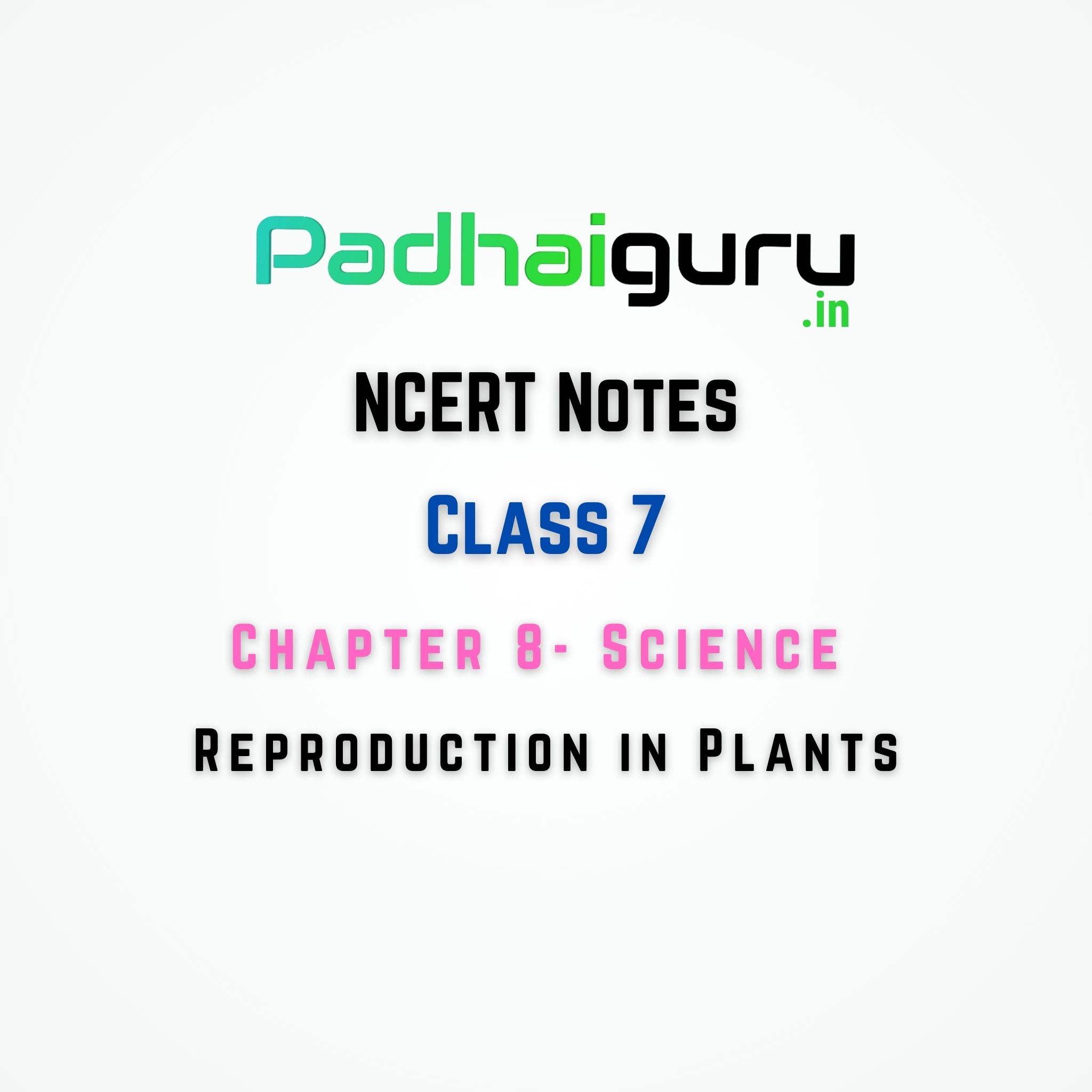Class 7 NCERT Notes for Science
08. Reproduction in Plants Class 7 Science NCERT Notes for Chapter 8 CBSE

Welcome to Reproduction in Plants Class 7 Science NCERT Notes for Chapter 8 CBSE.
Exam Notes: Reproduction in Plants for 7th Class Students
Introduction
- Reproduction is a fundamental characteristic of all living organisms.
- In this chapter, we will explore the various modes of reproduction in plants.
Modes of Reproduction
Asexual Reproduction
- Asexual reproduction allows plants to produce new individuals without the need for seeds.
- It includes methods such as fragmentation, budding, spore formation, and vegetative propagation.
Fragmentation
- Some plants break into fragments, and these fragments grow into new plants.
- Example: Spirogyra
Budding
- In budding, a small projection (bud) forms on the parent plant and eventually detaches to become a new plant.
- Example: Yeast
Spore Formation
- Spores are asexual reproductive bodies that can withstand harsh conditions.
- They germinate to form new individuals under favorable conditions.
- Examples: Moss and ferns.
Vegetative Propagation
- New plants are produced from vegetative parts like roots, stems, leaves, and buds.
- Example: Rose cutting or money plant in water.
Sexual Reproduction
- Sexual reproduction involves the fusion of male and female gametes.
- Flowers play a crucial role in sexual reproduction.
Flower Structure
- A flower typically consists of male reproductive parts (stamens) and female reproductive parts (pistil).
- Stamens produce pollen grains, while the pistil contains ovules.
Pollination
- Pollination is the transfer of pollen grains from the anther to the stigma.
- Types: Self-pollination (same flower) and Cross-pollination (different flowers of the same kind).
- Agents: Wind, water, and insects assist in pollination.
Fertilization
- Fertilization is the fusion of male and female gametes to form a zygote.
- The zygote develops into an embryo.
Fruit and Seed Formation
- After fertilization, the ovary grows into a fruit, while ovules develop into seeds.
- Fruits protect seeds and aid in seed dispersal.
Seed Dispersal
- Seed dispersal prevents overcrowding and competition among plants.
- Methods: Wind, water, and animals help disperse seeds.
- Examples include winged seeds, floating seeds, and seeds with hooks.
Advantages of Asexual and Sexual Reproduction
- Asexual reproduction leads to quick growth and exact copies of parent plants.
- Sexual reproduction results in offspring with characteristics of both parents.
Conclusion
- Understanding plant reproduction is essential for the survival and diversity of plant species.
Keywords and Definitions
- Asexual reproduction: Reproduction that produces new individuals without the involvement of seeds.
- Budding: A form of asexual reproduction where a small projection (bud) detaches to become a new organism.
- Spore formation: A method of asexual reproduction involving the production of spores.
- Vegetative propagation: Asexual reproduction where new plants arise from vegetative parts of the parent plant.
- Sexual reproduction: Reproduction that involves the fusion of male and female gametes.
- Pollination: The transfer of pollen grains from the anther to the stigma.
- Fertilization: The fusion of male and female gametes to form a zygote.
- Seed dispersal: The process of dispersing seeds to prevent overcrowding and competition among plants.
FAQs (Frequently Asked Questions)
1. What is asexual reproduction in plants?
- Asexual reproduction in plants allows them to produce new individuals without seeds, using methods like fragmentation, budding, spore formation, and vegetative propagation.
2. How do flowers contribute to sexual reproduction in plants?
- Flowers contain male (stamens) and female (pistil) reproductive parts. Pollination, the transfer of pollen grains, and fertilization, the fusion of gametes, occur in flowers.
3. What is the difference between self-pollination and cross-pollination?
- Self-pollination occurs within the same flower, while cross-pollination involves the transfer of pollen from one flower to another of the same kind.
4. How are seeds dispersed in plants?
- Seeds are dispersed by wind, water, and animals to prevent overcrowding and competition among plants.
5. What are the advantages of asexual reproduction in plants?
- Asexual reproduction leads to rapid growth and produces new plants that are exact copies of the parent plant.
This was the end of Reproduction in Plants Class 7 Science NCERT Notes for Chapter 8 CBSE.
For more information, refer to NCERT SOLUTIONS, NCERT NOTES, and NCERT BOOKS .
